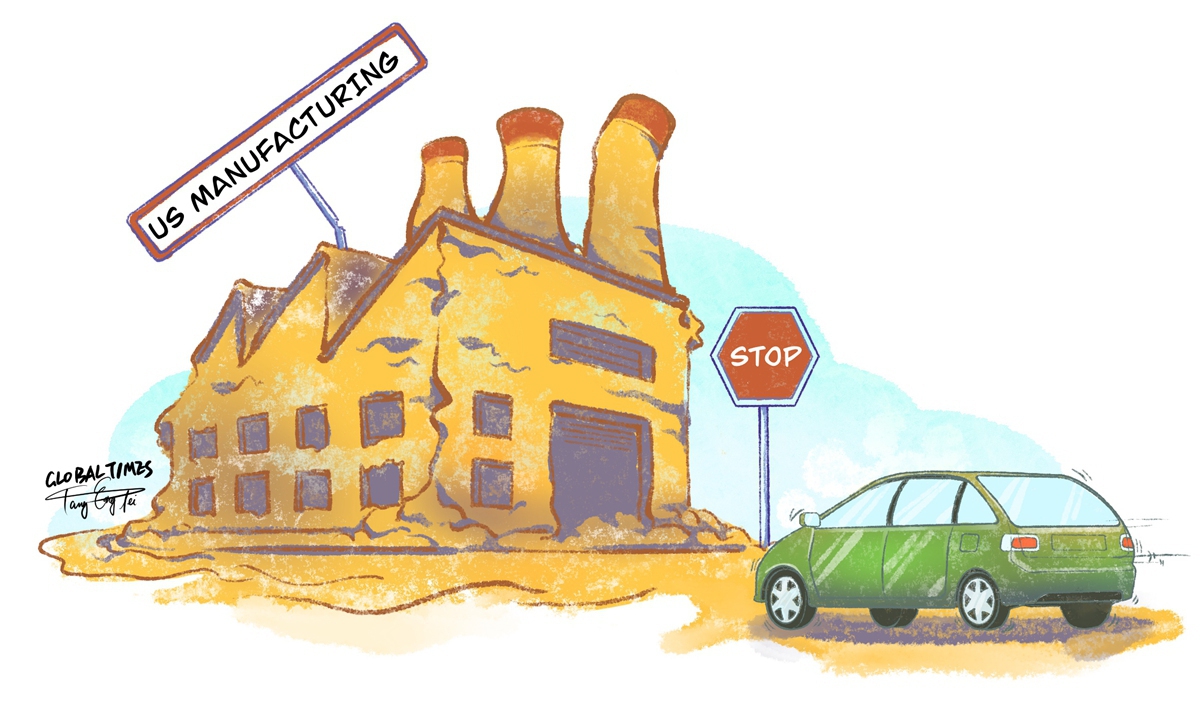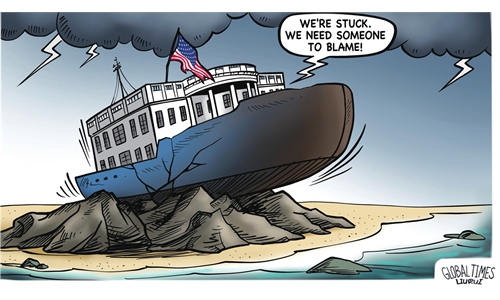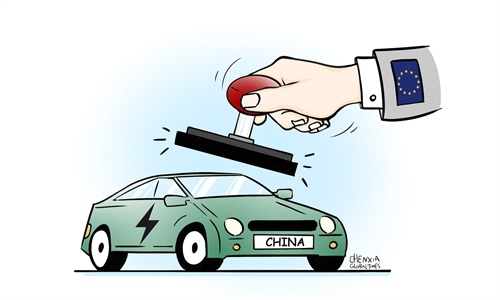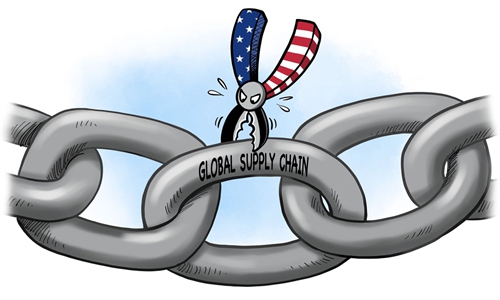
Illustration: Tang Tengfei/GT
While the US policy of reshoring manufacturing has made progress, prioritizing the promotion of the US manufacturing industry completely over economic efficiency will inevitably pose challenges and uncertainties to the sustainability of its return.A Financial Times investigation revealed on Monday that $84 billion of the US manufacturing investments announced in the first year of the Inflation Reduction Act and the CHIPS and Science Act have been delayed or paused indefinitely.
These delays accounted for nearly 40 percent of the 114 large projects worth more than $100 million under Washington's flagship industrial and climate policies.
There is no denying the Inflation Reduction Act and the CHIPS and Science Act provided some momentum and had a positive impact for the return of manufacturing to the US, especially related to high-tech products like semiconductors, electric vehicle (EV) batteries and wind turbines. As of February 2024, annual investment in new manufacturing facilities in the US hit nearly $225 billion, a record high even after adjusting for inflation, according to data from the US Congress Joint Economic Committee.
However, the fact that some 40 percent of big manufacturing projects have been thwarted revealed the complex challenges faced by the US in its efforts to revitalize manufacturing, even when it comes to high-tech industries where the country holds clear advantages.
Even for the projects that are in progress, there remains significant uncertainty regarding their ultimate implementation. For instance, four years after TSMC's announcement about its plans to build a plant in the US, the company still hasn't begun chip production in its first Arizona plant, The New York Times recently reported.
According to media reports, the US manufacturing industry is facing challenges such as labor shortages, high supply chain costs, deteriorating market conditions, policy uncertainty and rising financing costs. These unfavorable factors together have significantly increased the investment risks and production costs for businesses in the US, affecting the efficiency and development of the manufacturing industry.
In particular, labor shortages pose an important constraint. Businesses find it difficult to recruit enough skilled workers, directly affecting production efficiency and product quality. In addition, the lack of industry chain support and the absence of industry collaboration in some sectors in the US mean that for some businesses, investing and building factories in the US requires building an industry chain ecosystem from scratch.
Even if businesses make investment decisions based on short-term subsidies or the pressure of US technological hegemony, the huge costs and uncertainties cannot be ignored in the long term.
One root cause of the delays in large-scale manufacturing projects in the US is that the US is trying to disrupt the established global industrial chain with financial subsidies, forcing multinational companies to invest and build factories in the US, which is not in line with commercial logic and lacks a market foundation. Even if some investments in the technology industry have been made, this cannot bring about a complete revitalization of US manufacturing.
Moreover, even if the US government provides large-scale financial support through measures to promote the development of clean energy technology and the semiconductor industry, there are many difficulties in the implementation process, such as the uncertainty over government subsidy requirements and the lack of policy details. Also, due to the rising debt pressure of the US government, the approach of using fiscal subsidies to stimulate industrial development is unsustainable.
Washington's manufacturing policy contains the intention to decouple from China. This approach of trying to completely replace China by promoting so-called "friendshoring" and seeking to reduce dependence on China in the supply chain is not only difficult to implement, but also seriously undermines market rules and the international economic and trade order.
Why is it proving so difficult to revitalize US manufacturing? The development of the US economy has already evolved beyond the stage of large-scale manufacturing, and returning to that stage is difficult and without precedent. More importantly, in the era of globalization, the manufacturing industry in countries like China and Germany has surpassed that of the US in many fields.
It is unrealistic for the US to pursue a closed-door approach to its manufacturing sector and produce globally competitive products. This goes against the law of economic development, and deviating from it will result in consequences.



